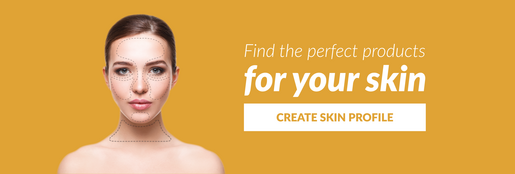
“Dry skin” is one of the most talked about skin concerns in the beauty industry. Skin Therapists note that it is often confused with “dehydrated skin”. That’s why, it is important for you to know that dry and dehydrated skin are inherently different. Skin Therapists, Dermalogica Jane and Naomi, reveal that “dry skin lacks oil” whereas dehydrated skin lacks “water.” In particular, dry skin signals a loss of oil in the skin’s outermost structure.
What is Dry Skin?
While dry and dehydrated skin have similar telltale signs, our Jersey Beauty Skin Therapist, Christine, helps us to separate the two skin concerns. Christine’s advice is to take both of your thumbs and gently stroke them along any specific area of your skin, to check for dryness. If the skin underneath your thumb feels rough or flaky, your skin in that area is dry. However, if the skin underneath your thumb feels really tight and begins to “drag” and crease as you lightly move across the surface, Christine comments, “this is a massive sign of dehydration".
Skin Therapist Christine notes that “flakiness” is a primary indicator of dry skin. However, dry skin can also experience irritation, itchiness and sensitivity. Skin that is dry may appear dull or grey, especially if your skin tone is dark or olive. It is quite likely that men who shave their face regularly will experience dry skin, particularly if they are not using preshave products and nourishing moisturisers. This is because shaving removes oils from the skin’s outer layer. When oils are regularly removed from the skin’s structure in this way, flakiness and damage begin to show.
Why is my skin dry?
To understand dry skin, you must first get to grips with how the “lipid” content of your skin’s outermost layer functions. Simply put, it’s helpful to know how oil and essential fatty acids are built into skin’s structure. One of our favourite analogies at Jersey Beauty comes from science editor, Chris, who compares the outermost layer of your skin (aka your “stratum corneum”) to that of a brick wall. Typically, bricks that form a brick wall are surrounded by pointing or cement, which functions to hold the wall in place. While bricks that form a wall represent dead skin cells, Chris tells us that pointing in a brick wall has similarities to our skin’s “lipid barrier,” found in the outermost layer of skin. Chris explains the analogy:
“With dry skin, there’s a lot of holes in the pointing of that wall. If you can reinforce the wall, put the pointing back in, then you’ve got a better protection, a better wall.”
To give clarity: dry skin lacks a strong lipid barrier. It is an indication that lipids, represented by pointing in a brick wall, are damaged or exhausted. Ultimately, you will need to reinforce skin’s lipid barrier in order to restore dryness back to full health.
What are Lipids?
Lipids are fatty substances like oils, proteins and amino acids. They exist in various types, but the lipids that form the outermost layer of our skin are exceptionally clever. These lipids hold a healthy amount of water inside our bodies, whilst simultaneously keeping our skin somewhat waterproof, so that we can bathe, swim and shower without drowning inside out! Skin Therapist, Dermalogica Jane, tells us that skin around your eye area actually doesn’t produce as much oily lipids in comparison to rest of your skin. She comments:
“oil production around the eye area is limited, if not none for some skin types, so you are very much reliable on topical application of a cream.”
This is why Skin Therapists advise that you find a good eye cream and use it frequently to build lipid content.
Treatment for Dry Skin
Although it is tempting for dry skin sufferers to quickly purchase a heavyweight product, which are thick and full of oil, this is certainly not what a Skin Therapist would prescribe. Sure, it’s important to restore the lipid oil structure of your dry skin, but to do so you will need to find tailored, professional products, made from the best, active ingredients to match your unique complexion.
Science editor, Chris, comments: “we need to put things back in the skin to support itself.” Simply put, you should be looking to restore skin with nutrients and active ingredients so that, eventually, your skin will be able to function well, with its outermost lipid barrier (representative of pointing in a brick wall) repaired to full health. So, where do you start? Guinot’s Skin Therapist, Nicola, reveals that if you have dry skin, you should look for branded, Guinot skincare product names that include the term “Nutri” or “Nutrition.” For example Guinot Serum Nutri-Cellulaire is an intensive, booster product made for your dry skin.
Guinot’s Nicola comments that this is a particularly great product if your skin “feels uncomfortable.” Nicola goes on to explain, “[the client] might get flaking or peeling, so [Guinot’s Serum Nutri-Cellulaire] will really help to nourish the skin.” The main active ingredients in Guinot’s Serum Nutri-Cellulaire are known as “proceramides.” Proceramides are waxy, lipid molecules that provide in-depth moisture to the skin. Because proceramides in Guinot’s Serum Nutri-Cellulaire work to rebuild the damaged structure of dry skin, you will notice a softer, radiant complexion after regular use.






